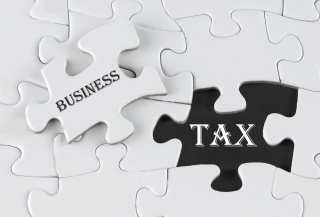The Rwanda tax system emphasizes domestic revenue mobilization to reduce reliance on foreign aid, fund public infrastructure, and support private sector-led growth. Tax policies balance progressive taxation for equity with competitive rates to attract foreign direct investment (FDI), which reached $1.4 billion in 2024.
Rwanda’s tax system is administered by the Rwanda Revenue Authority (RRA) and is designed to be efficient, transparent and investor-friendly, aligning with the country’s National Strategy for Transformation (NST1, 2017–2024, and NST2, 2025–2029).
Rwanda ranks highly in ease of doing business (38th globally in the World Bank’s index) partly due to streamlined tax administration via digital platforms like Irembo and e-tax systems. As of September 2025, the tax-to-GDP ratio stands at around 16–17%, with collections rising 12.3% year-on-year to RWF 2.62 trillion in FY 2023/24.
Rwanda’s tax regime includes direct taxes (income-based) and indirect taxes (consumption-based). Below is a summary of major rates effective in 2025:
| Tax Type | Rate/Details | Notes/Applicability |
|---|---|---|
| Personal Income Tax (PIT) | Progressive brackets (monthly taxable income in RWF): – 0 – 60,000: 0% – 60,001 – 100,000: 10% on excess over 60,000 – 100,001 – 200,000: 20% on excess over 100,000 – >200,000: 30% on excess over 200,000 | Applies to residents on worldwide income; non-residents on Rwandan-sourced income. Annual equivalents: 0–720,000 (0%), 720,001–1,200,000 (10%), 1,200,001–2,400,000 (20%), >2,400,000 (30%). Deductions for family allowances and pensions. |
| Corporate Income Tax (CIT) | 28% (reduced from 30% in FY 2024/25) | Standard rate for resident companies; target reduction to 20% medium-term. 0% for regional HQs of international firms and philanthropic entities. |
| Value-Added Tax (VAT) | 18% standard rate | Applies to most goods/services; exemptions for essentials like rice, maize flour, and pharmaceuticals. Reintroduced on mobile phones and select ICT equipment in 2025. |
| Withholding Tax (WHT) | – Dividends: 15% – Interest: 15% – Royalties: 15% – Services (non-residents): 15–20% | Final tax for non-residents; creditable for residents. |
| Capital Gains Tax (CGT) | 10% | Applies to gains from immovable property sales (exempt first RWF 5 million) and other assets; increased from 5% in May 2025. |
| Property Tax | – Land: RWF 0–80 per sqm – Residential (second homes): 0.5% of market value – Commercial buildings: 0.3% of market value (capped at RWF 30 billion) | Annual levy; reduced rates in 2024 to ease burden on owners. |
| Excise Duties (select) | – Cosmetics/beauty products: 15% on CIF value – Beer: 65% of factory price – Cigarettes: RWF 230/pack + 36% retail price – Airtime: 12% (rising to 15%) – Fuel: 15% on CIF value | Ad valorem or specific; hybrids taxed 5–15% by age; electric vehicles exempt to promote green mobility. |
| Other Levies | – Tourism tax: 3% on accommodation – Digital services tax: 1.5% – Gambling (GGR): 40%; winnings: 25% – Environmental levy: On single-use plastics and fossil fuels | New in 2025; fund sector-specific investments. |
In response to fiscal pressures from post-COVID recovery and rising debt (projected to peak at 80% of GDP in 2025), Rwanda enacted comprehensive reforms via laws passed in May 2025. Key changes include:
Rate Reductions for Competitiveness: CIT lowered to 28% with a phased target of 20% to draw FDI; property taxes simplified and reduced to stimulate real estate.
Base Broadening: Reintroduction of 18% VAT on mobile phones (exempt since 2010) and ICT equipment to capture digital economy growth without stifling adoption; exemptions retained for education/health tech.
Sector-Specific Levies: 3% tourism tax on lodging (effective July 2025) to fund hospitality infrastructure; 1.5% digital services tax on non-resident tech firms; environmental levies on plastics/fossil fuels for sustainability.
Sin Taxes and Compliance: Excise hikes on tobacco (up 77%), beer (up 8%), and gambling (up to 40% on revenue) to curb consumption and raise RWF 50–100 billion annually; fuel levy shifted to 15% ad valorem for road funding.
Vehicle and Green Incentives: Higher registration fees but full exemptions for electric vehicles (EVs) and reduced duties on hybrids to accelerate clean transport adoption.
These reforms, outlined in the Medium-Term Revenue Strategy (MTRS) 2022–2027, aim to boost revenues by 1% of GDP by FY 2025/26 through better compliance and anti-evasion measures like AI-driven audits.
Rwanda’s tax framework has been instrumental in driving GDP growth from 8.5% annually (2010–2019) to a projected 7.1% in 2025, transforming it from a post-genocide economy to Africa’s “Singapore.” Key mechanisms include:
Revenue Mobilization for Investment: Reforms target RWF 3.5 trillion in collections for FY 2025/26, funding NST2 priorities like infrastructure (e.g., fuel levy for roads) and social programs (e.g., VAT exemptions for school feeding). This reduces aid dependence (from 40% of budget in 2010 to <20% today) and supports fiscal consolidation amid debt challenges.
Attracting FDI and Private Sector Growth: Low CIT (target 20%) and incentives like 0% tax for regional HQs/exporters in priority sectors (agri-processing, ICT) have boosted FDI in Kigali International Financial Centre (KIFC), ranked 5th in Sub-Saharan Africa. Simplified licensing (one per district) cuts compliance costs by 30%.
Equity and Sustainability: Progressive PIT and sin taxes reduce inequality (Gini coefficient down to 43%) while funding green initiatives (EV exemptions, plastic levies), aligning with SDGs and climate resilience. Tourism levy enhances a sector contributing 12% to GDP.
Efficiency and Digital Innovation: E-filing (95% adoption) and base-broadening minimize evasion, with studies showing positive fiscal multipliers on growth (1% revenue increase yields 0.5–1% GDP uplift).
Challenges remain, such as SME burdens from VAT hikes, but ongoing assessments ensure policies adapt to inclusive growth. Overall, Rwanda’s approach exemplifies how strategic taxation can catalyze development in low-income contexts.
© Times of Ukraine

